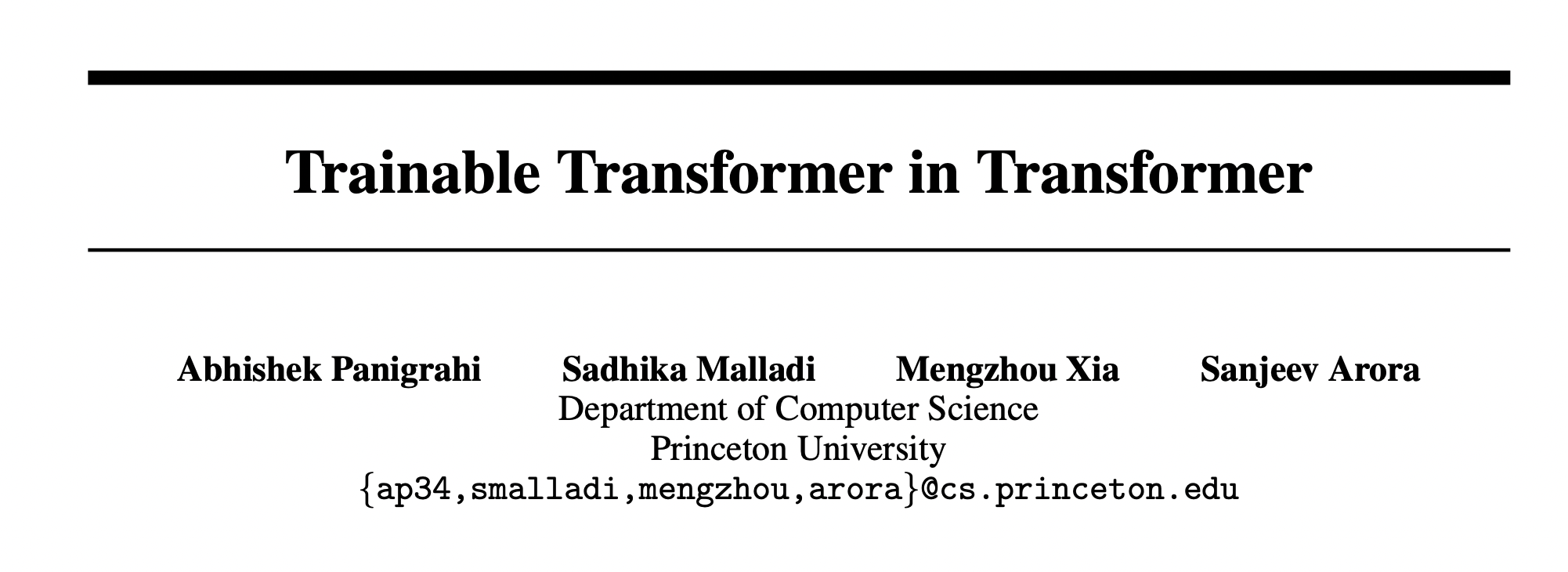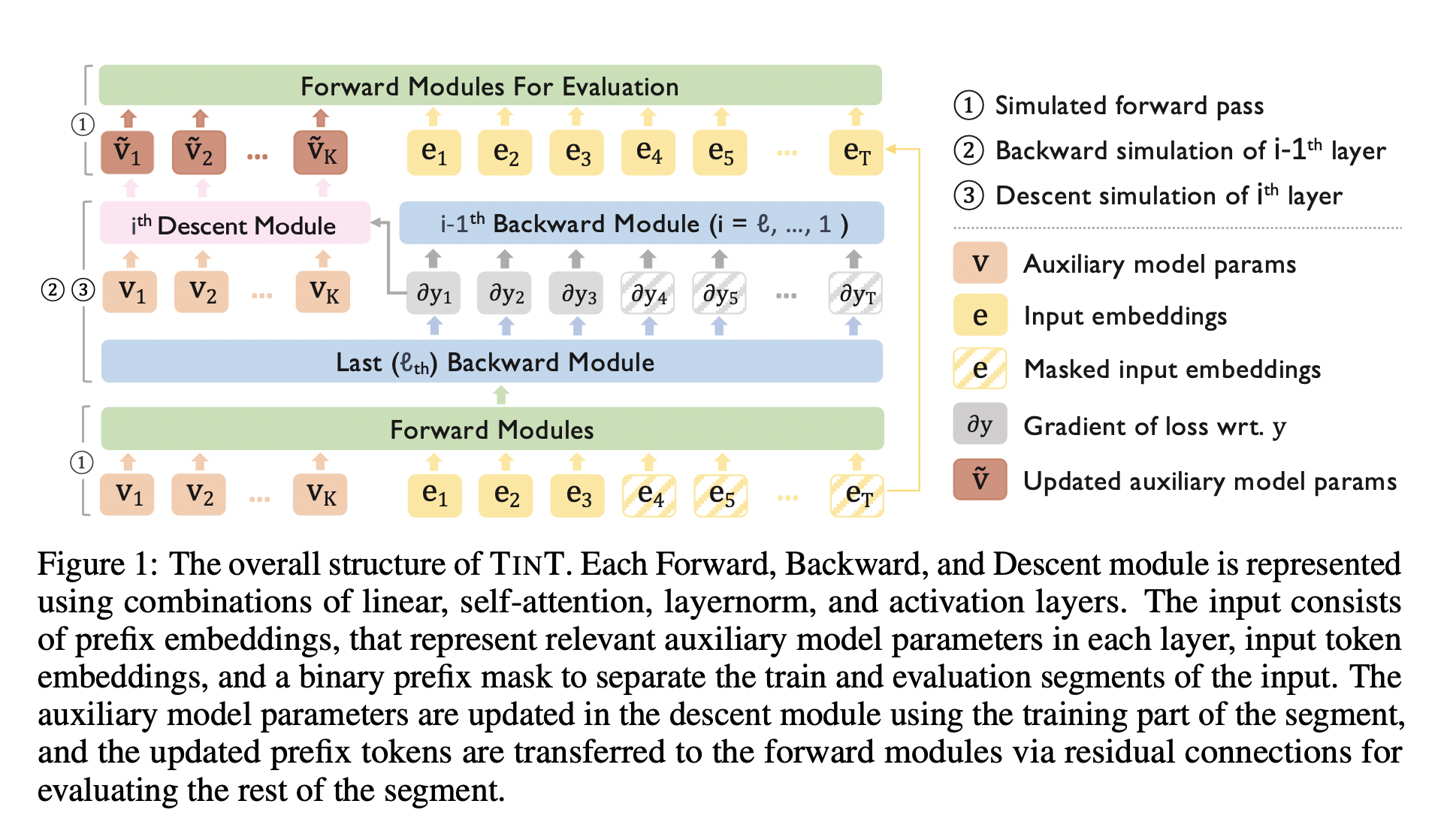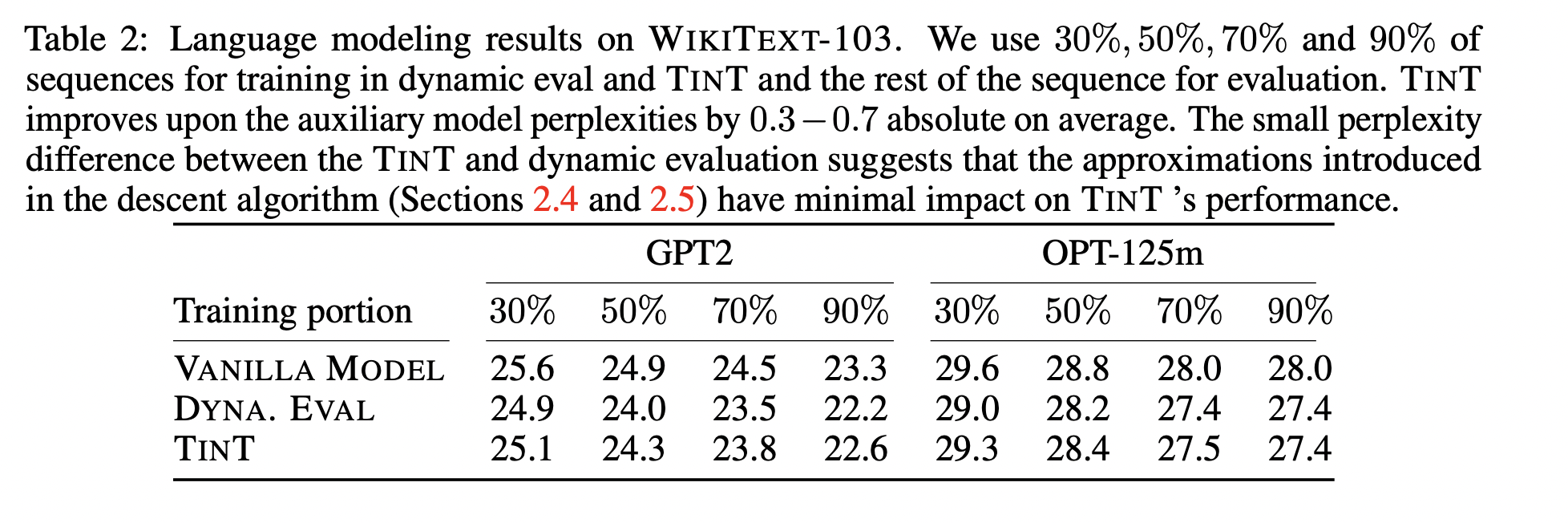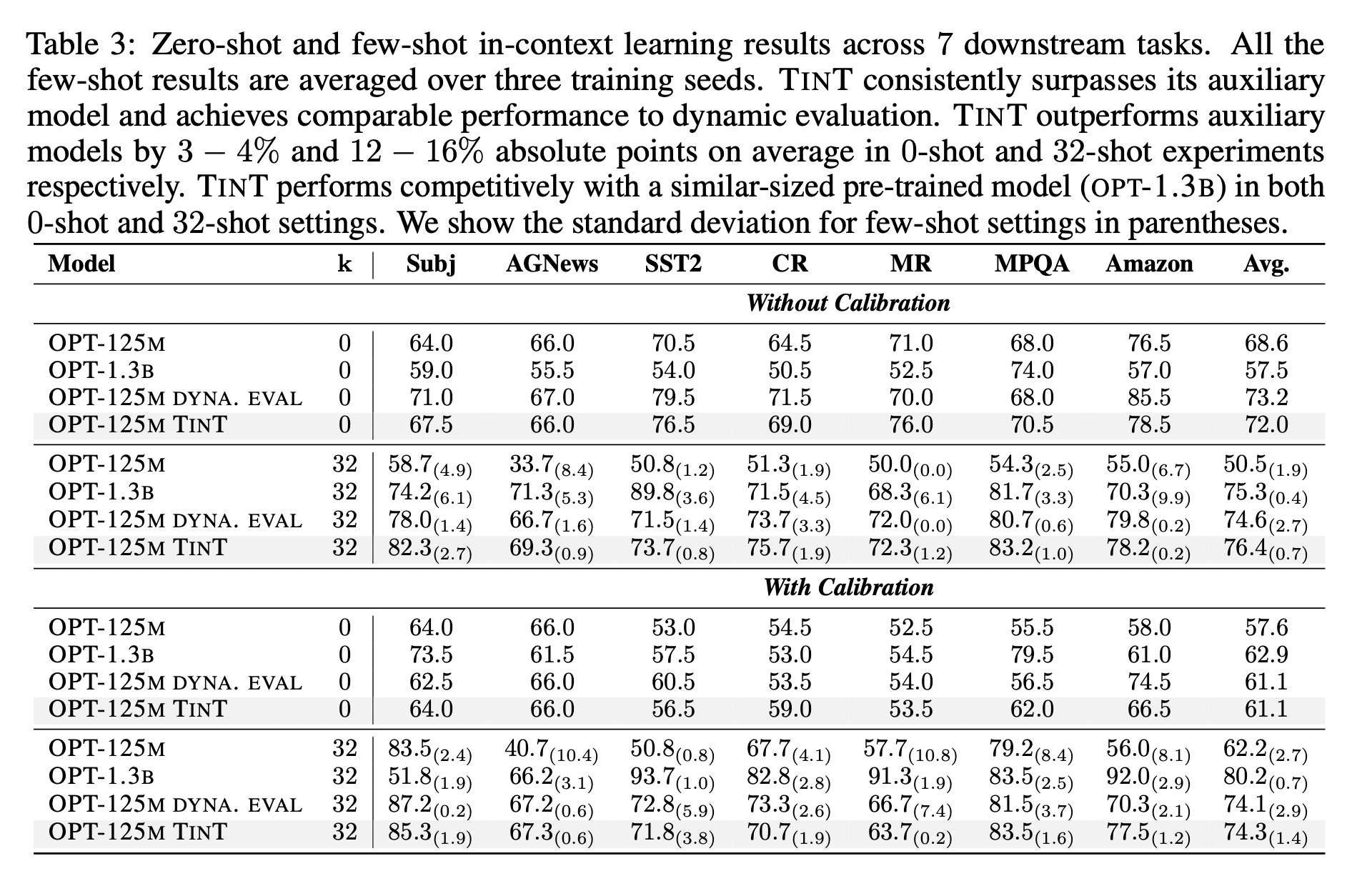Trainable Transformer in Transformer
Amin
July 2023


In-Context Learning
In-Context Learning?
- Happens when language models “learn” from given training exemplars in the context and subsequently predict the label of a test example within a single inference pass.
- Is believed to occur when the large (“simulator”) model mimics and trains a smaller and simpler auxiliary model inside itself.
- This work: An efficient(-ish) architecture capable of doing GD within itself and doing In-Context Learning (ICL), only using the components existing in Transformers.

TinT
Main Idea
- Linear, LayerNorm and Attention modules can all be implemented with a self-attention layer.
- Weights of the auxiliary model can be stored (and loaded from) the designated prefix embeddings.
- Back-propagation on the mentioned modules can be approximated with a self-attention layer.
- The approximation is terrible, but works in practice, which suggests that real models might not do actual "Gradient Descent", but something close to it.
Linear Layers
- Let \(W: D_{aux} \times D_{aux} \) denote the weight and \(x_t\) denote the token being operated on.
-
Naive Implementation:
- Go through each row of weight matrix sequentially.
- Put each entry of the row in \(\{v_i\}_{i}\) prefix embeddings.
- \(x_t\) will be in input embeddings
-
More efficient:
- Stack (shard) the operations by \(S\). The outputs will be sparse, and would need to be rearranged, which requires (not so expensive) computations.
Linear Layers
- To perform the dot product, use a self-attention module:

Layer Normalization


Computing \(\langle \partial_z, z \rangle z\) is expensive, and they instead approximate this gradient with a first-order Taylor approximation.
Layer Normalization


Computing \(\langle \partial_z, z \rangle z\) is expensive, and they instead approximate this gradient with a first-order Taylor approximation.
Softmax Self-Attention

Again, since the computation of \(\partial_{q_t}\) is expensive, they only back-propagate through \(\partial_{v_t}\) to compute \(\partial x_t\).
Experiments, Part 1

Experiments, Part 2

Implications
- A parameter-efficient architecture designed specifically for ICL is proposed. It requires only about 10x more parameters than the auxiliary model that it contains.
- Although 10x more parameters sounds absurd, it's the first proposed architecture that is actually efficient enough to be implemented and tested in practice.
- The performance achieved is similar to that of the auxiliary model itself, which suggests they might be going through similar procedures internally.